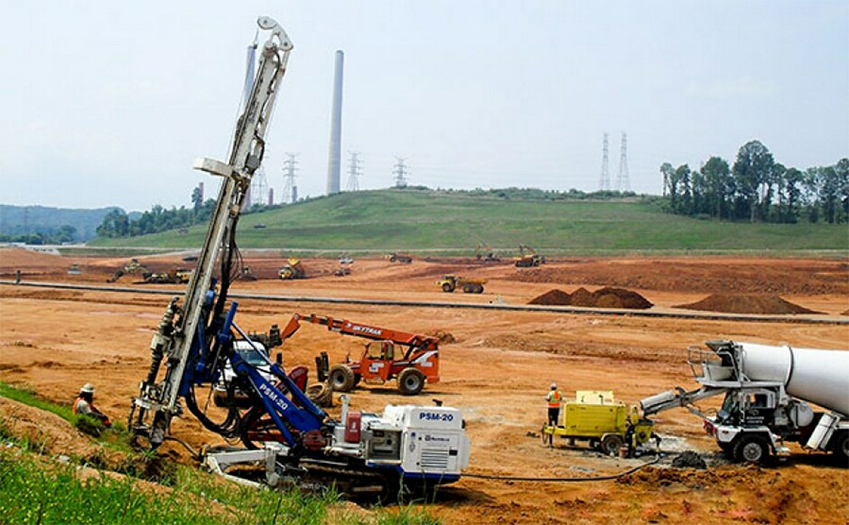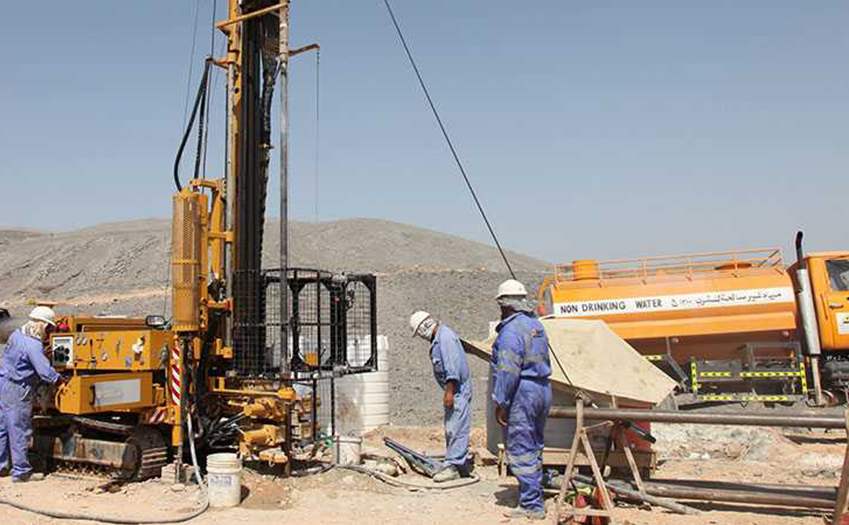Geotechnical investigations are performed by geotechnical engineers or engineering geologists to obtain information on the physical properties of soil earthworks and foundations for proposed structures and for repair of distress to earthworks and structures caused by subsurface conditions; this type of investigation is called a site investigation. Geotechnical investigations are also used to measure the thermal resistance of soils or backfill materials required for underground transmission lines, oil and gas pipelines, radioactive waste disposal, and solar thermal storage facilities. A geotechnical investigation will include surface exploration and subsurface exploration of a site. Sometimes, geophysical methods are used to obtain data about sites. Subsurface exploration usually involves soil sampling and laboratory tests of the soil samples retrieved.
Geotechnical investigations are very important before any structure can be built, ranging from a single house to a large warehouse, a multi-storey building, and infrastructure projects like bridges, high-speed rail, and metros.
Surface exploration can include geologic mapping, geophysical methods, and photogrammetry, or it can be as simple as a geotechnical professional walking around on the site to observe the physical conditions at the site.
To obtain information about the soil conditions below the surface, some form of subsurface exploration is required. Methods of observing the soils below the surface, obtaining samples, and determining physical properties of the soils and rocks include test pits, trenching (particularly for locating faults and slide planes), boring, and in situ tests. These can also be used to identify contamination in soils prior to development in order to avoid negative environmental impacts.
Soil sampling
Borings come in two main varieties, large-diameter and small-diameter. Large-diameter borings are rarely used due to safety concerns and expense but are sometimes used to allow a geologist or an engineer to visually and manually examine the soil and rock stratigraphy in-situ. Small-diameter borings are frequently used to allow a geologist or engineer to examine soil or rock cuttings or to retrieve samples at depth using soil samplers, and to perform in-place soil tests.
Soil samples are often categorized as being either disturbed or undisturbed; however, “undisturbed” samples are not truly undisturbed. A disturbed sample is one in which the structure of the soil has been changed sufficiently that tests of structural properties of the soil will not be representative of in-situ conditions, and only properties of the soil grains (e.g., grain size distribution, Atterberg limits, compaction characteristic of soil , to determine the general lithology of soil deposits and possibly the water content) can be accurately determined. An undisturbed sample is one where the condition of the soil in the sample is close enough to the conditions of the soil in-situ to allow tests of structural properties of the soil to be used to approximate the properties of the soil in-situ. Specimen obtained by undisturbed method are used to determine the soil stratification, permeability, density , consolidation and other engineering characteristics.
Offshore soil collection introduces many difficult variables. In shallow water, work can be done off a barge. In deeper water a ship will be required. Deepwater soil samplers are normally variants of Kullenberg-type samplers, a modification on a basic gravity corer using a piston (Lunne and Long, 2006). Seabed samplers are also available, which push the collection tube slowly into the soil.


